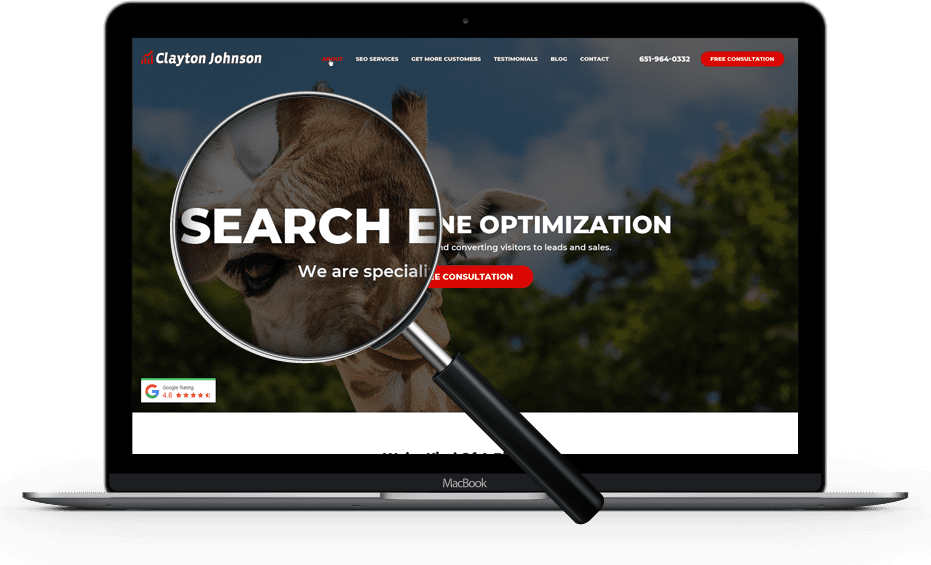SEO is all about getting search engine spiders to notice your site and place it into relevant search results. But beyond that, you also want the search engine to recognize the value of your website and give it one of the top-ranking spots on the results page. How can you go about achieving that? Check out the brief SEO checklist below and then use these tips to optimize any website.
First Steps
When asked, “What is SEO,” you might think of content optimization first, and you wouldn’t be wrong. Start by writing page titles that are keyword based. This will serve to help set the direction for all of the keywords on your site, as well as establish the theme of your webpage. Then write up meta tags and descriptions that could help entice people to click through to your site when your webpage does show up in search engine results. Then it’s time to put keyword phrases strategically throughout your content, weaving them into the material in a natural way, before integrating them into the site’s source code. Finally, to make it even easier for a search engine to index your site, set up an HTML version, and an XML version, as an XML sitemap could be submitted through webmaster tools offered by search engines like Google.
SEO is an ongoing process. Every day brings different challenges. Trust me, I understand how overwhelming it can all feel.
You don’t want to get so caught up in the daily challenges that you forget about the larger picture. Every quarter, I perform an SEO audit on all of my sites. Also, I perform an audit whenever I take on a new client.
An SEO audit gives you a complete overview of how your site is currently performing. Obviously, larger sites take a longer time to audit, but this oftentimes well spent. After all, you can’t plan for the future without a thorough understanding of the present.
Here’s my complete guide to performing an SEO audit, including all the questions you’ll need to ask.
SEO Audit Explained
SEO campaigns have many moving parts. An SEO audit is a way to identify what’s working and what isn’t. You can then improve on the weak spots and, in turn, improve your position in the search results.
Performing an audit at the start of each quarter is a great way to ensure your site stays on track with your customer engagement goals. Here’s what to do:
Step 1: Set Clear Goals
Specific types of content only work in specific situations. In order to determine the right content format, you need a clear understanding of what you want to accomplish. Some examples of measurable goals include:
- Increase organic search visibility by at least 40% in the next six months
- Increase overall lead volume by 25% in the next year
You want to include an actual timetable, percentages, and other numbers you can objectively measure.
Step 2: Analyze Your Current Keywords
Once upon a time, you devoted a lot of resources to determine which keywords you needed to include on your site. This doesn’t mean those are the best keywords to use today, however. You’ll want to make sure these keywords still align with your goals.
Step 3: Analyze the Competition
Using Buzzsumo, you’ll want to search for popular blog posts that are similar to your own content. Who is publishing this content? These sites are likely your competition.
You’ll want to analyze your competitors’ sites in the same way you do your own. What keywords are they using? You can find this out by searching through the Meta Tags on their pages.
Check out the social media pages of your competition, too. How often do they post content? What’s their level of engagement with visitors? Different social media platforms appeal to different types of audiences.
Step 4: Check for Any Technical Issues
If users have issues accessing or navigating your site, they’re likely to leave and never come back. On the other hand, smooth experience on your website encourages user action and creates a sense of trust in your brand.
You can check the speed of your site with Google’s website speed tool. Ideally, you want your site to load in under a second. This can be a tall order at times, however. At the very least, you want your site to load in under three seconds.
Check on various mobile devices, too. Your site should be optimized for mobile already. This means shorter content, clear images, and nothing which slows down loading times.
Step 5: Compare Your Current Audit to Previous Audits
Did you have any success in correcting any mistakes you discovered in the previous quarter? Use the current audit as a way to measure your progress.
Audits grow even more valuable the more of them you perform over time. You can spot trends both good and bad. Quarterly audits are a great way to get an expansive picture of how your site is performing as a whole.
After implementing technical SEO into your website, you will want to determine just how effective those strategies are. Tracking the progress will allow you to see what is working and what isn’t, and then you could make the appropriate adjustments to improve your ranking. A great tool is Google Analytics, as one example. You could use the free version to track how your site is performing overall, and when it comes to SEO in particular, you could track things like which pages are getting the highest amount of traffic, as well as bounce rates and other metrics.
On top of tracking the effectiveness of your SEO strategy, it is also important to check your website on a regular basis in order to look for things like errors and broken links that would make it more difficult for a search engine to locate the content on your site, index your site, and bring more traffic to it.
With this SEO checklist at your fingertips, hopefully, SEO will become less mysterious and easier to tackle. Remember that implementing SEO tools and strategies into your website isn’t a one-time thing; instead, you will need to continually revisit your SEO tactics in order to make the most of them and ensure that your site will consistently rank above your competition in search engine results.




